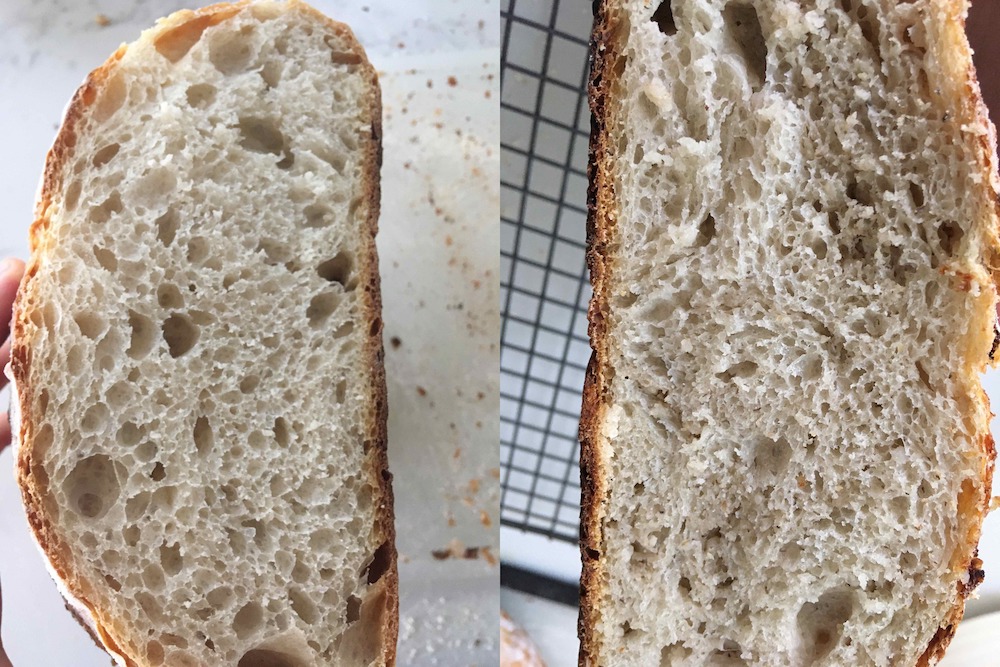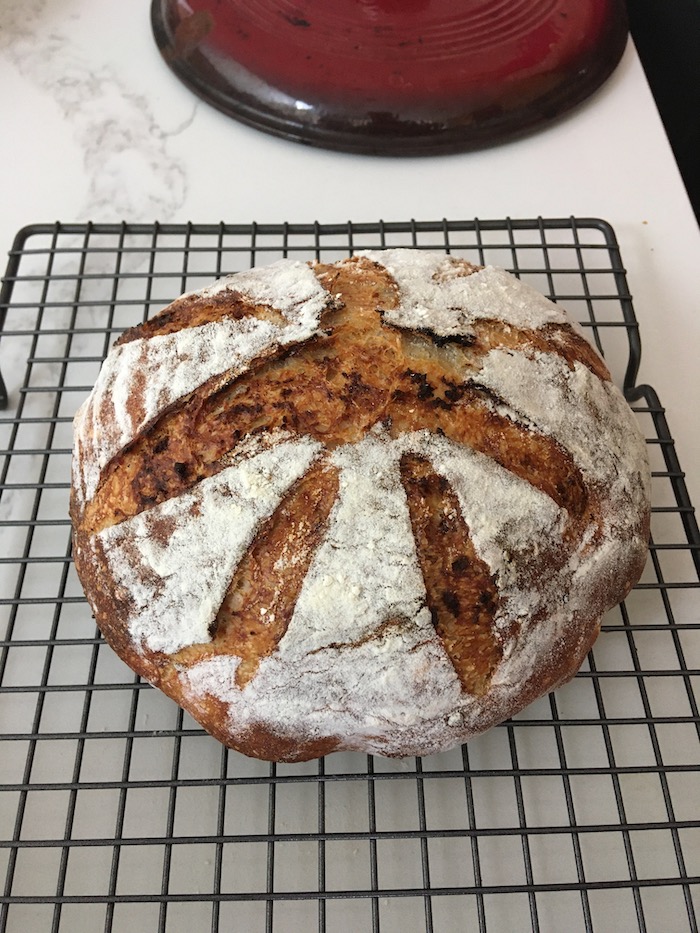The main components of flour, starches and gluten, can be modified using enzymes to change the color, flavour and mouthfeel of finished bread. Here’s an application of barley koji to make your homemade bread more interesting.
What are the effects of enzymes on bread dough?
Koji contains at least two enzymes that will effect bread dough. Protease, an enzyme that cuts proteins, will start to chop up the gluten protein into smaller parts: peptides and amino acids. This has a few effects. First, it will weaken the gluten network, resulting in a more pliable dough. However, in the limit (and we did this), the dough will become paste-like - not very attractive, but still tasty as a pizza dough. Second, as the protease cuts the proteins, more flavourful peptides and amino acids are released. This includes glutamine, which provides an umami taste.
 Protease working on proteins, converting them to small peptides and eventually amino acids.
Protease working on proteins, converting them to small peptides and eventually amino acids.
The amylase in the koji will work on cutting the starches to smaller units, called dextrins, and eventually cut them into individual glucose units (recall starch is just a chain of glucose molecules).
 Amylase converting starch molecules to dextrins, and eventually glucose molecules.
Amylase converting starch molecules to dextrins, and eventually glucose molecules.
The glucose and short-chained dextrin molecules can be consumed by the yeast, but more likely they will combine with the recently-liberated peptides and amino acids via the Maillard reaction. The abundance of glucose and peptides causes a deeper browning and more flavour than dough without these enzymes.
 Maillard reaction: short chain dextrins and glucose reacts with peptides and amino acids, causing that deep brown crust and “baked” flavour
Maillard reaction: short chain dextrins and glucose reacts with peptides and amino acids, causing that deep brown crust and “baked” flavour
But can we see these changes at a macro level? We prepared a dough (see recipe below), and split it into two halves prior to the bulk-ferment and proofing stages. We added barley koji to one half, and otherwise kept everything else the same. You can see the results:
 Left: no koji added. Right: koji added before bulk-ferment.
Left: no koji added. Right: koji added before bulk-ferment.
There’s a very clear difference. Immediately upon pulling the koji-loaf, one could smell a cheesy-like crust (think: those chedder cheese buns you can buy at grocery stores), and even taste cheesy notes later. The crumb was moister as well, likely because of the released water previously trapped by starch molecules.
 Left: no koji added. Right: koji added before bulk-ferment.
Left: no koji added. Right: koji added before bulk-ferment.
Recipe for koji addition to dough
The recipe is adapted from the book Flour, Water, Yeast, Salt. It makes 2 large loaves. The total time, including proofing stages, is about 1 day. The poolish (a pre-ferment) is created first, and used in the final dough
Poolish
- 500g white flour
- 500g, 27℃ water
- 0.4g (1/8 tsp) dried yeast or 1g fresh yeast.
- Mix well the yeast and water together.
- Add the yeast-water mixture to the flour, mix together.
- Cover with lid, and leave at room temperature for 12h-14h.
Final dough
- 500g white flour
- 21g salt
- 3g (3/4 tsp) dried yeast or 7g fresh yeast.
- 250g warm water
- 300g barley koji
- 1000g of poolish (from previous step)
- Blend half the water and the koji in food processor.
- Mix first three ingredients into bowl.
- Pour half the water around edges of poolish, loosening it from its container.
- Pour water/poolish into bowl.
- Add blended koji into bowl.
- Mix with hands, and cover.
- Fold the dough 2 or 3 times during the first few hours.
- After the dough has doubled (a few hours), divide into halves.
- Shape as you wish. Place into proofing baskets, and cover with towel or bag. We’ll proof for an hour.
- Preheat oven to 475℉ and put in a dutch oven with lid on.
- At the end of proofing, line dutch oven with square of parchment paper, put in loaf.
- Cover and bake for 30m, then uncover and bake for 20m-30m.
- Remove loaf and let cool on cooling rack.
 Bread with koji added before proofing. Pretty!
Bread with koji added before proofing. Pretty!
 Cameron Davidson-Pilon
Cameron Davidson-Pilon